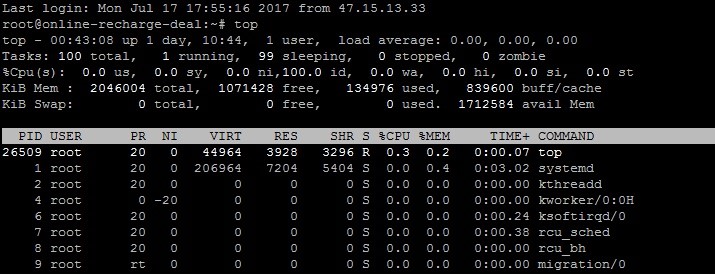Online English Dictionary
A Simple Knowledgebase
• ADS
• CSS
• EXCEL
• SCRIPTS
• SEO
• WEBSITE-MONITORING-AND-BACKUP
WEB-SERVER | BUY-SERVER | IONOS-CLOUD
Virtual Private Server (VPS) & Cloud Server
ionos.com provides VPS and Cloud server at very low cost. Both are blazing fast and full root access. Their VPS Server is bundled with SSD disk, full root access & unlimited traffic, still their VPS server cost is comparatively low than other VPS Server. Buying and managing their VPS server is extermely easy. You can manage server (e.g. restart, shut down, reinstall image, assign IP etc.) very easily from Servers & Cloud section.
After buying server with desired OS, you get IP & root password using which you can login to your server. Here we'll discuss about Linux Ubuntu only. Now open putty and login to your server using IP, username (root) and provided root password. Now you've to change root password. For this,
sudo su - (enter to root) passwd root (enter & retype root password) passwd -u root (password expiry information changed)
Now you've to enable root access by this way:
nano /etc/ssh/sshd_config
Edit or uncomment the following lines as we write:
i. PermitRootLogin without-password or PermitRootLogin prohibit-password to PermitRootLogin yes
ii. PasswordAuthentication no to PasswordAuthentication yes
Finally Ctrl+X, Y, Enter (to save). Now
service ssh restart (restart SSH to save these changes)
Now you've to set timezone. For this
dpkg-reconfigure tzdata& choose Asia => Kolkata. (or, your local timezone)
To check timezone, use the command:
timedatectl
Important Linux Commands
1. free - The free command is the most simple and easy to use command to check memory usage on linux. Here is a quick example:

The m option displays all data in MBs. The total 1998 MB is the total amount of RAM installed on the system, which is nearly 2 GB. The used column shows the amount of RAM that has been used by linux, in this case around 131 MB. The output is pretty self-explanatory.
2. top - The top command is generally used to check memory and cpu usage per process. However it also reports total memory usage and can be used to monitor the total RAM usage. Press CTRL+Z to quit from it.
The process list shows all the processes with various process specific details in separate columns.
PID - Process ID
USER - The system user account running the process.
%CPU - CPU usage by the process.
%MEM - Memory usage by the process
COMMAND - The command (executable file) of the process
Sorting the results displayed. When top command is displayed the result on the screen, press the following key (in Capital letter) to sort/categorize the results. Pressing the specific button again to back to original data.
• M - Press M key (in capital, not small) to sort the process list by memory usage. Processes using the most memory are shown first and rest in order.
• P - Press 'P' to sort the process list by cpu usage.
• V - Pressing 'V' will display the processes in a parent child hierarchy.
• A - Split the output in multiple panels.
3. htop - Similar to the top command, the htop command also shows memory usage along with various other details.